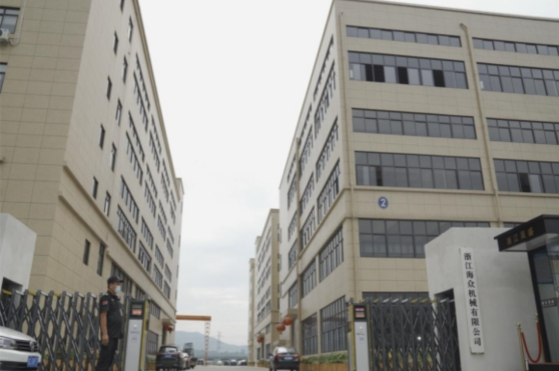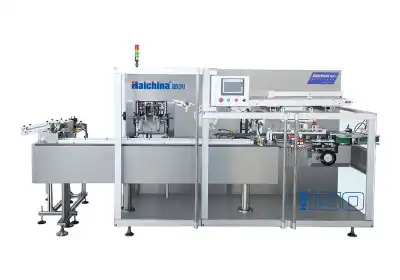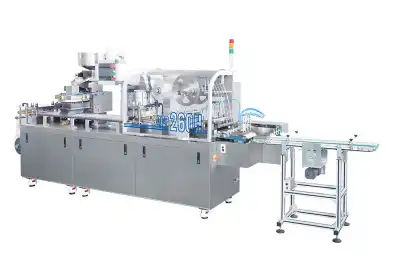Key Features of Food-Safe Wrapping Machines
Hygienic Design and Materials
The cornerstone of food-safe wrapping machines lies in their hygienic design. Opt for equipment constructed with non-porous, corrosion-resistant materials like stainless steel. These materials prevent bacterial growth and facilitate thorough cleaning. Look for machines with smooth surfaces, minimal crevices, and easily accessible components to ensure comprehensive sanitation. Additionally, seek out wrapping machines that incorporate food-grade lubricants and sealing mechanisms to prevent contamination during the packaging process.
Cleaning and Maintenance Ease
Efficient cleaning and maintenance are paramount for food safety. Choose wrapping machines with tool-less disassembly features, allowing for quick and thorough cleaning. Machines with automated cleaning systems or clean-in-place (CIP) capabilities can significantly reduce downtime and ensure consistent sanitation. Consider models with removable parts that can be easily sanitized separately, enhancing overall hygiene standards.
Compliance with Food Safety Regulations
Ensure that the wrapping machine adheres to international food safety standards such as HACCP, FDA, and ISO 22000. Certifications like these demonstrate the machine's compliance with rigorous food safety protocols. Look for equipment that offers traceability features, allowing you to monitor and document the packaging process for quality control and regulatory purposes. This compliance not only ensures food safety but also provides peace of mind for both manufacturers and consumers.
Operational Efficiency and Performance
Speed and Capacity
The operational efficiency of a wrapping machine is largely determined by its speed and capacity. It's important to evaluate how many packages the machine can process per minute and ensure this meets your production demands. Machines with adjustable speed settings provide flexibility to handle varying product types and batch sizes. High-capacity machines allow for larger throughput, reducing manual labor and boosting productivity. However, it's crucial to maintain a balance between speed and accuracy to ensure packaging quality and compliance with food safety standards.
Versatility and Adaptability
Versatility is essential in the ever-changing food industry. Choose a wrapping machine that can accommodate a wide range of product sizes, shapes, and packaging materials. Features like quick-change tooling and customizable settings help minimize downtime during product switches. Additionally, machines designed with modular components allow for easy upgrades or modifications, providing long-term flexibility to adapt as packaging requirements evolve over time. This adaptability helps future-proof your packaging line and maximize return on investment.
Energy Efficiency and Sustainability
Energy efficiency is a critical consideration for modern wrapping machines, particularly in food-safe packaging. Look for machines equipped with technologies such as servo motors or regenerative energy systems to optimize power usage. These features reduce operational costs while supporting environmental sustainability goals. Additionally, select equipment that minimizes material waste and is compatible with eco-friendly packaging films. Prioritizing energy-efficient and sustainable designs helps create a greener production process without sacrificing performance or quality.
Advanced Technologies and Innovations
Intelligent Control Systems
State-of-the-art wrapping machines integrate intelligent control systems for enhanced performance and safety. Look for machines with user-friendly interfaces, touchscreen controls, and remote monitoring capabilities. Advanced systems often include recipe management features, allowing for quick and precise adjustments between different product runs. Intelligent controls can also provide real-time data on machine performance, enabling proactive maintenance and optimizing operational efficiency.
Vision Systems and Quality Control
Incorporating vision systems into wrapping machines elevates quality control measures. These systems can detect defects, ensure proper sealing, and verify label placement, all crucial for maintaining food safety standards. Look for machines with integrated vision technology that can perform real-time inspections, reducing the risk of packaging errors and contamination. Advanced quality control features not only enhance food safety but also minimize product waste and recalls.
IoT Integration and Industry 4.0 Compatibility
As the food packaging industry evolves, consider wrapping machines that embrace Industry 4.0 principles. Machines with Internet of Things (IoT) capabilities offer enhanced connectivity, allowing for remote monitoring, predictive maintenance, and data-driven decision-making. These features can significantly improve operational efficiency, reduce downtime, and provide valuable insights into the packaging process. Look for equipment that can integrate seamlessly with your existing systems and support future technological advancements in the food packaging industry.
Conclusion
Selecting the right food-safe wrapping machine is a critical decision that impacts not only production efficiency but also product quality and consumer safety. By focusing on hygienic design, operational efficiency, and advanced technologies, you can choose a wrapping machine that meets the rigorous demands of the food industry. Remember to consider factors such as compliance with food safety regulations, adaptability to various products, and long-term sustainability. Investing in a high-quality, food-safe wrapping machine ensures that your packaging process remains efficient, safe, and capable of meeting evolving industry standards.
FAQs
How often should food-safe wrapping machines be cleaned?
The frequency of cleaning depends on usage, but generally, a thorough cleaning should be performed daily, with more intensive cleaning weekly or between product changeovers.
Can food-safe wrapping machines handle different packaging materials?
Yes, many modern wrapping machines are designed to work with various materials, including biodegradable options. Always check the machine specifications for compatibility.
What certifications should I look for in a food-safe wrapping machine?
Look for certifications such as CE, FDA compliance, ISO 22000, and HACCP validation to ensure the machine meets food safety standards.
Expert Food-Safe Wrapping Solutions | Haichina
At Haichina, we specialize in providing top-tier food-safe wrapping machines that meet the highest industry standards. Our cutting-edge equipment combines hygienic design, operational efficiency, and advanced technology to deliver unparalleled packaging solutions. With over two decades of experience, our CE and cGMP certified machines are tailored to meet diverse packaging needs across various industries. For expert guidance on selecting the perfect wrapping machine for your food packaging requirements, contact our specialized team at [email protected].
References
Johnson, M. (2023). "Advancements in Food-Safe Packaging Technology". Journal of Food Processing and Preservation, 47(3), 215-230.
Smith, A. & Brown, L. (2022). "Hygiene and Safety in Modern Food Packaging Equipment". International Food Safety Quarterly, 18(2), 45-60.
European Food Safety Authority. (2023). "Guidelines for Food Contact Materials in Packaging Machinery". EFSA Journal, 21(5), e07125.
Chen, X. et al. (2023). "Energy Efficiency in Food Packaging: A Comprehensive Review". Sustainable Production and Consumption, 35, 523-540.
Williams, R. (2022). "Industry 4.0 in Food Packaging: Opportunities and Challenges". Food Engineering Review, 14(4), 712-728.
Garcia, S. & Lee, K. (2023). "Material Innovations for Sustainable Food Packaging". Journal of Cleaner Production, 390, 136080.




